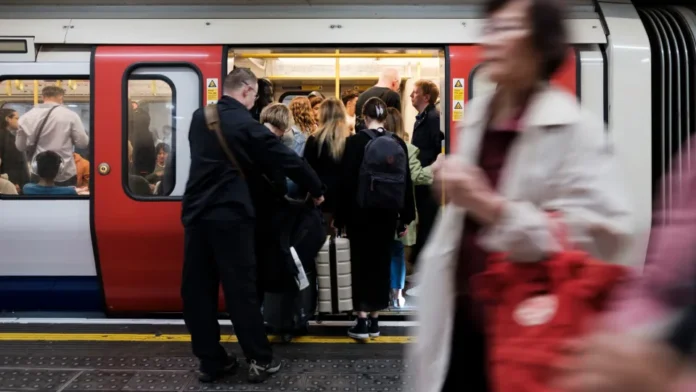On May 12, 2025, London’s transport network ground to a halt as a massive power failure struck, plunging TfL services into disarray. Commuters faced unprecedented disruption, with the Bakerloo, Jubilee, Northern, and Waterloo & City lines either fully or partially suspended. The Elizabeth line, a lifeline for east-west travel, saw no service between Paddington and Abbey Wood. This chaos, caused by a power outage in south-west London around 2:30 PM BST, left stations like Waterloo overwhelmed and passengers stranded. TfL reported that power was restored, but delays persisted, compounded by a separate fire alert suspending the Suffragette line on the Overground. For Londoners, this was a stark reminder of the city’s reliance on a fragile transport infrastructure. Let’s dive into the details, impacts, and what this means for the future of TfL.
TfL’s Immediate Response to the Crisis
When the power failure hit, TfL acted swiftly to mitigate the fallout. The Northern line saw no service between Morden and Stockwell or Euston and Kennington via Charing Cross, while the Jubilee line was halted between London Bridge and Finchley Road. TfL allowed passengers to use London Underground tickets on bus routes, easing some pressure. Social media buzzed with frustration, with posts on X reporting evacuations at Embankment and Paddington stations. One commuter vented, “Stuck at Paddington again—Elizabeth line is a mess!” TfL’s website and Go app became lifelines, offering real-time updates. Despite power restoration, severe delays lingered, with Waterloo station, a hub for multiple affected lines, bearing the brunt. TfL’s response showed resilience, but the scale of disruption exposed vulnerabilities.
| Affected TfL Services | Status (May 12, 2025) |
|---|---|
| Bakerloo Line | Fully Suspended |
| Jubilee Line | No service London Bridge to Finchley Road, severe delays elsewhere |
| Northern Line | No service Morden to Stockwell, Euston to Kennington |
| Elizabeth Line | No service Paddington to Abbey Wood, severe delays |
| Suffragette Line (Overground) | Suspended due to fire alert |
Why Power Failures Plague TfL
This isn’t the first time TfL has battled power issues. In October 2024, the Elizabeth line faced similar chaos due to a power supply failure, stranding commuters at Paddington and Farringdon. A 2023 incident at Clapham Common also saw closures from power faults. Experts point to aging infrastructure and overreliance on outdated electrical systems as culprits. London’s transport network, while iconic, struggles to keep pace with modern demands. The Elizabeth line, launched in 2022, promised efficiency but has faced 350 million passenger journeys alongside regular glitches. TfL’s funding constraints, coupled with rising energy costs, make upgrades tricky. Yet, these repeated failures spark questions: Is TfL prepared for a growing city? Commuters deserve answers, and fast.
TfL’s Broader Challenges in 2025
Beyond power outages, TfL faces a turbulent year. The Suffragette line’s suspension due to a fire alert on May 12 added to the day’s woes. Meanwhile, planned works and signal failures continue to disrupt services. For instance, Pontoon Dock station lacks lift service toward Bank until March 2025, impacting accessibility. TfL’s website notes ongoing escalator issues at London City Airport’s DLR station. These challenges pile onto a network already stretched thin. Mayor Sadiq Khan has pushed for expansions, like extending the Elizabeth line eastward, but funding remains a hurdle. Posts on X reflect commuter fatigue, with one user quipping, “TfL delays are the only constant in London.” The pressure is on for TfL to modernize while keeping fares affordable.
What Commuters Can Do During TfL Disruptions
Navigating TfL disruptions requires savvy planning. Here are practical tips to stay ahead:
- Check TfL’s Go App: Real-time updates on Tube, Overground, and Elizabeth line status.
- Use Alternative Routes: Buses accepted Underground tickets during the May 12 outage.
- Travel Off-Peak: Avoid 8:15–16:00 weekdays or before noon on weekends for quieter journeys.
- Follow X Updates: Accounts like @tweetthetube post instant alerts on disruptions.
- Plan for Delays: Add extra time, especially at hubs like Waterloo or Paddington.
These steps can’t erase the frustration, but they help commuters adapt. TfL’s advice to “reload the page” when service boards fail feels inadequate when you’re stuck underground. Still, staying informed is half the battle.
Looking Ahead: Can TfL Bounce Back?
The May 12 power failure underscores a broader truth: TfL must evolve to meet London’s needs. With 9 million residents and counting, the city’s transport backbone can’t afford to buckle. TfL’s resilience—restoring power and rerouting passengers—deserves credit, but reactive fixes aren’t enough. Investment in modern electrical systems and proactive maintenance could prevent future chaos. Commuters, meanwhile, remain vocal. One X post summed it up: “Love TfL, but today was a nightmare.” As TfL navigates funding woes and rising demand, the spotlight is on Khan and transport chiefs to deliver. Will they rise to the challenge, or will Londoners face more days like May 12? Only time will tell, but for now, keep that TfL Go app handy and brace for the ride.
